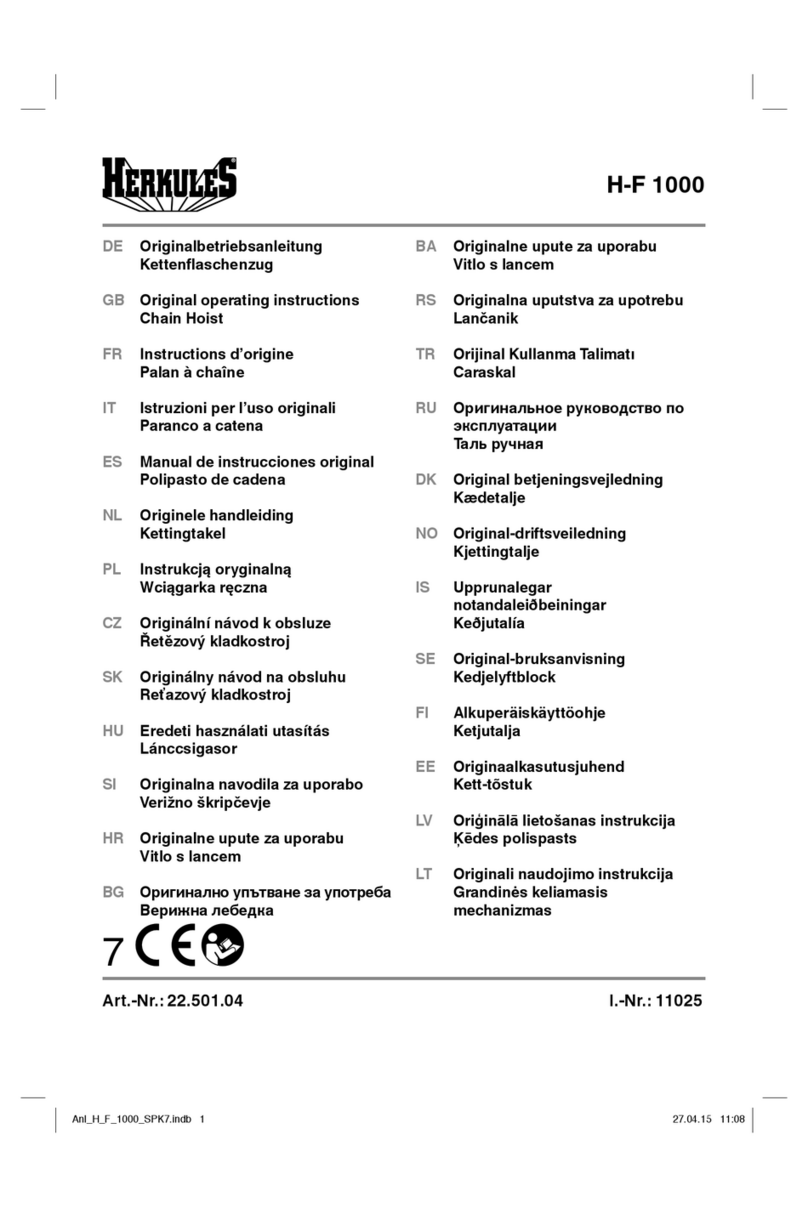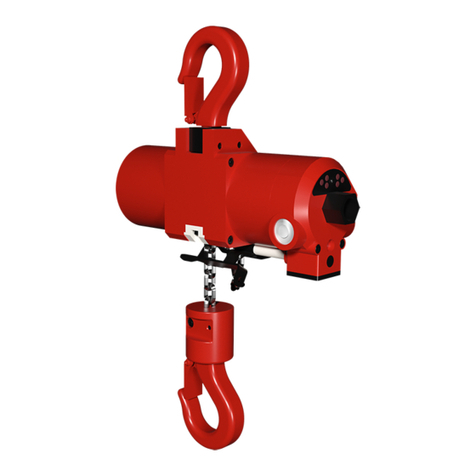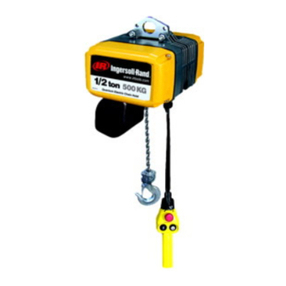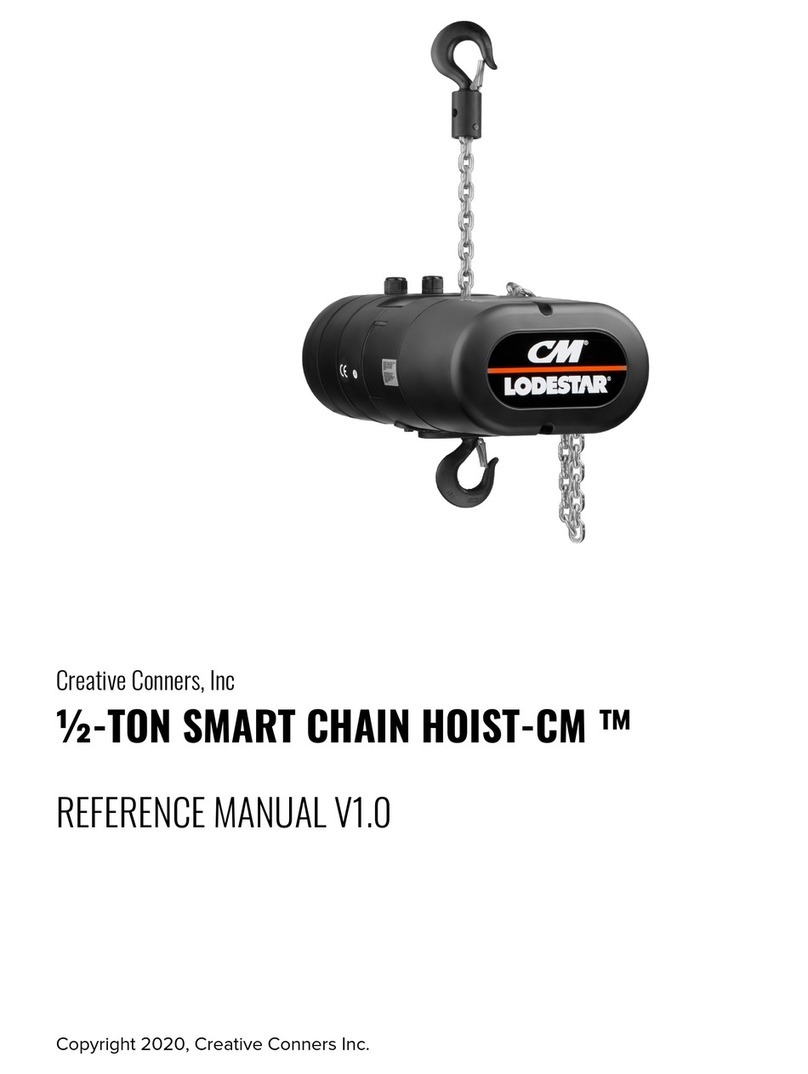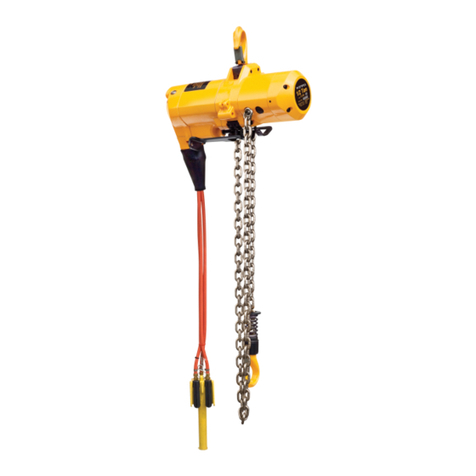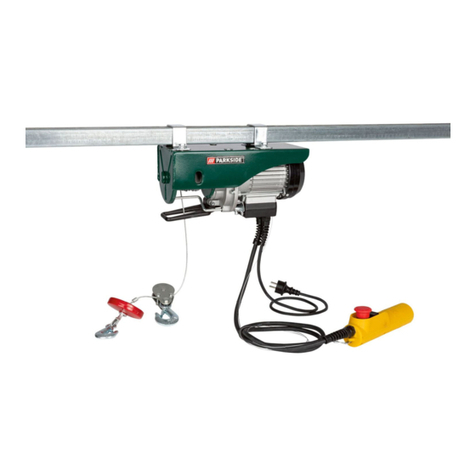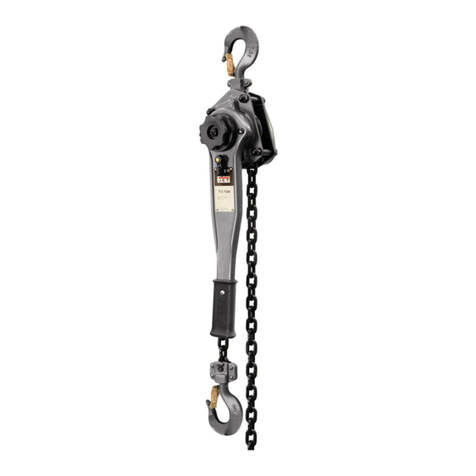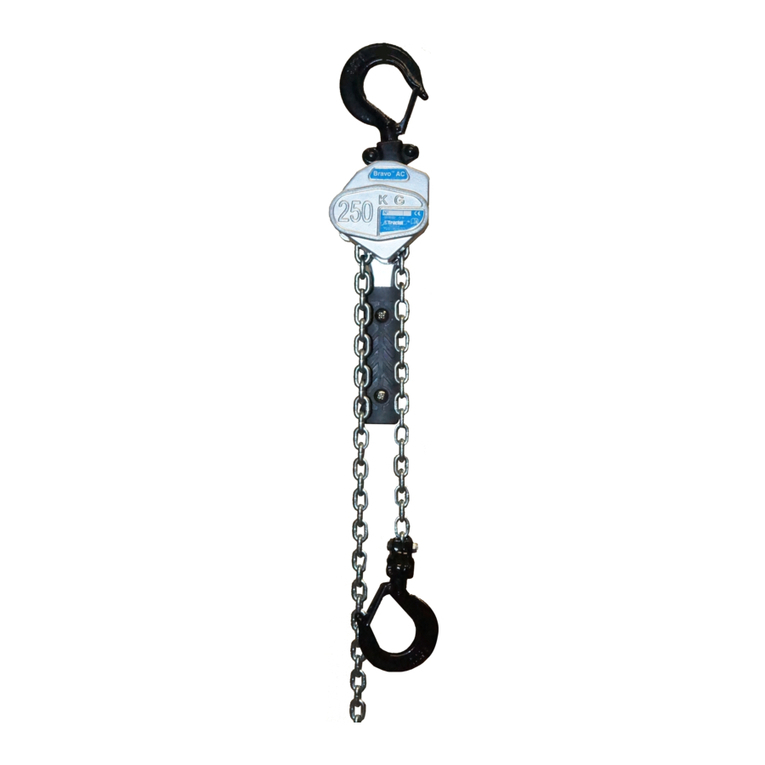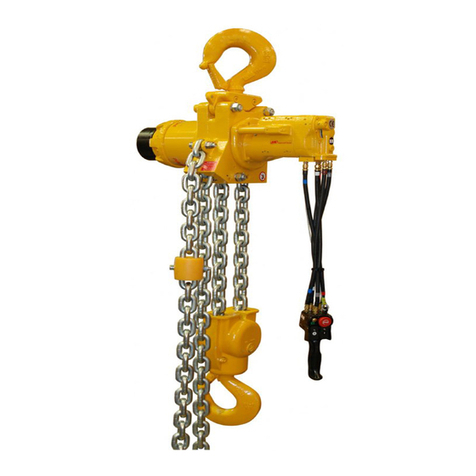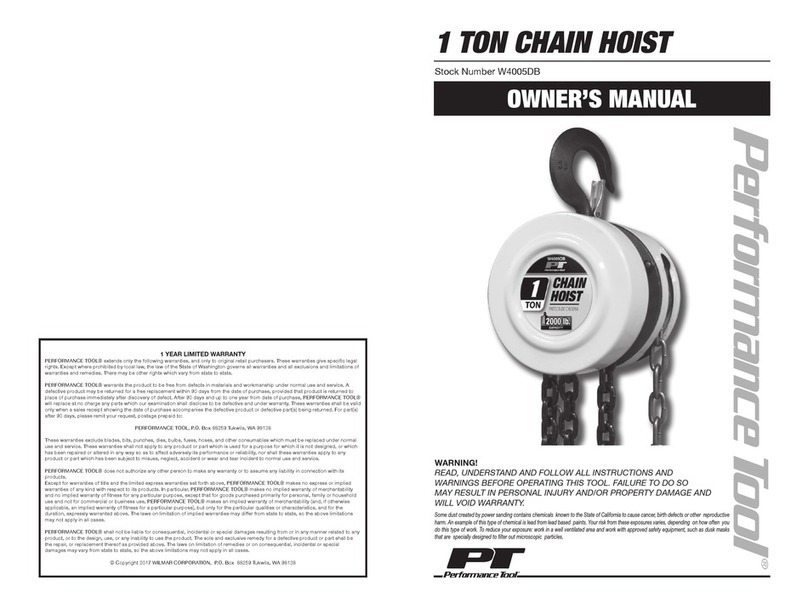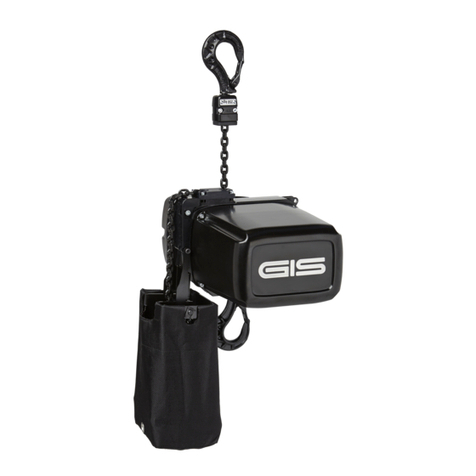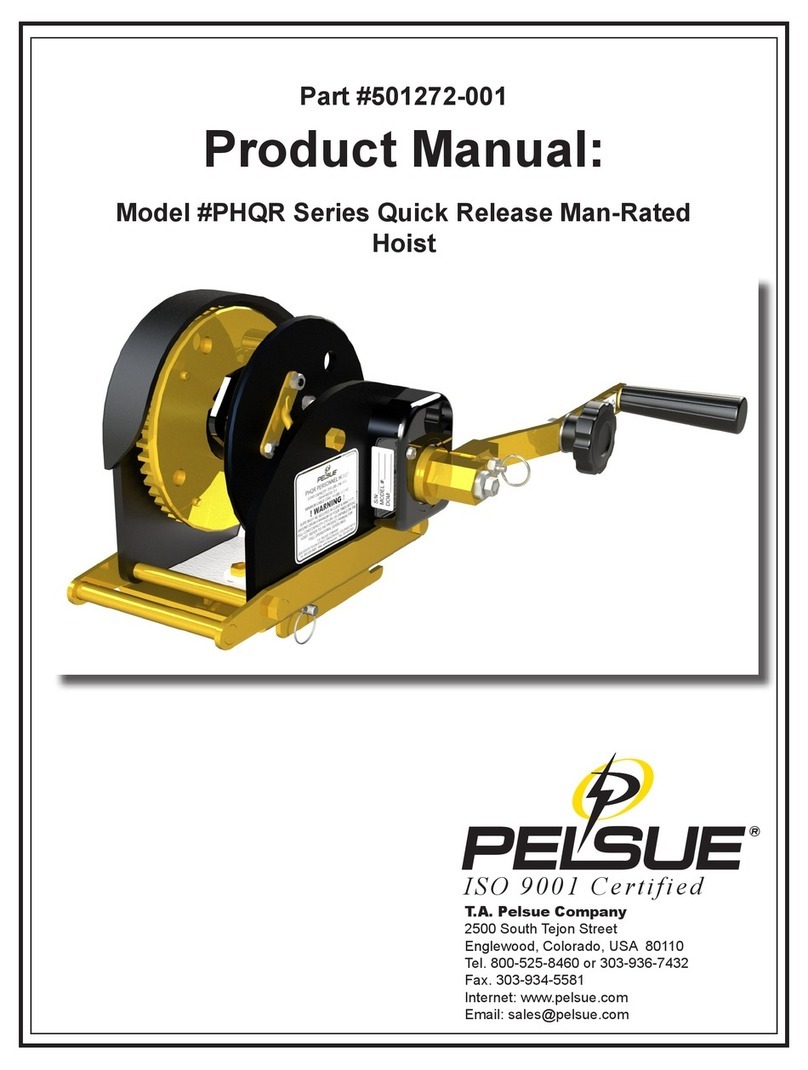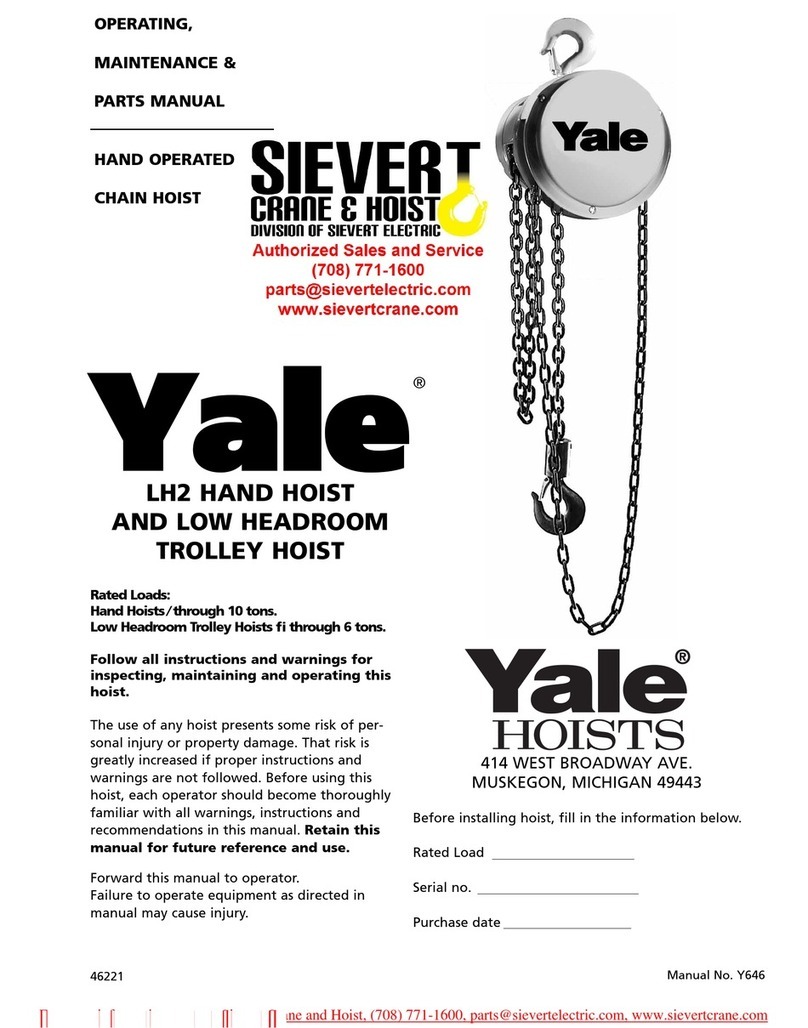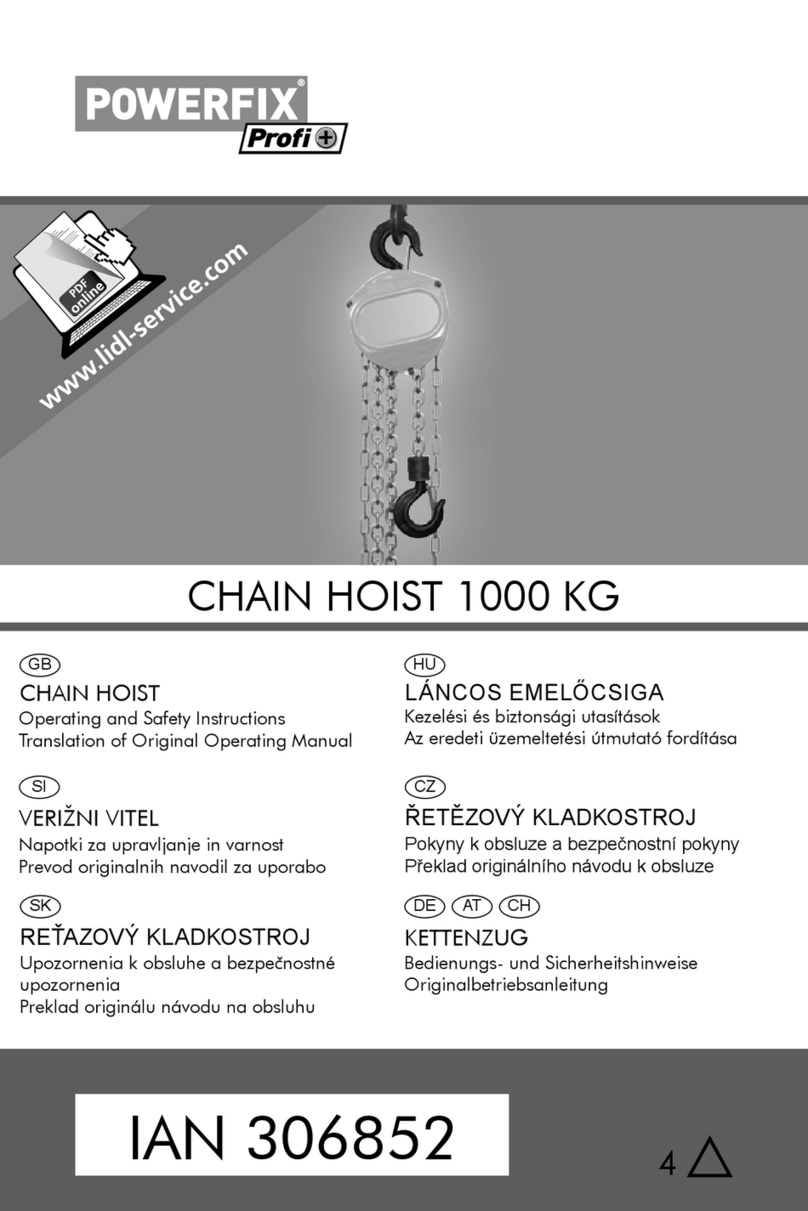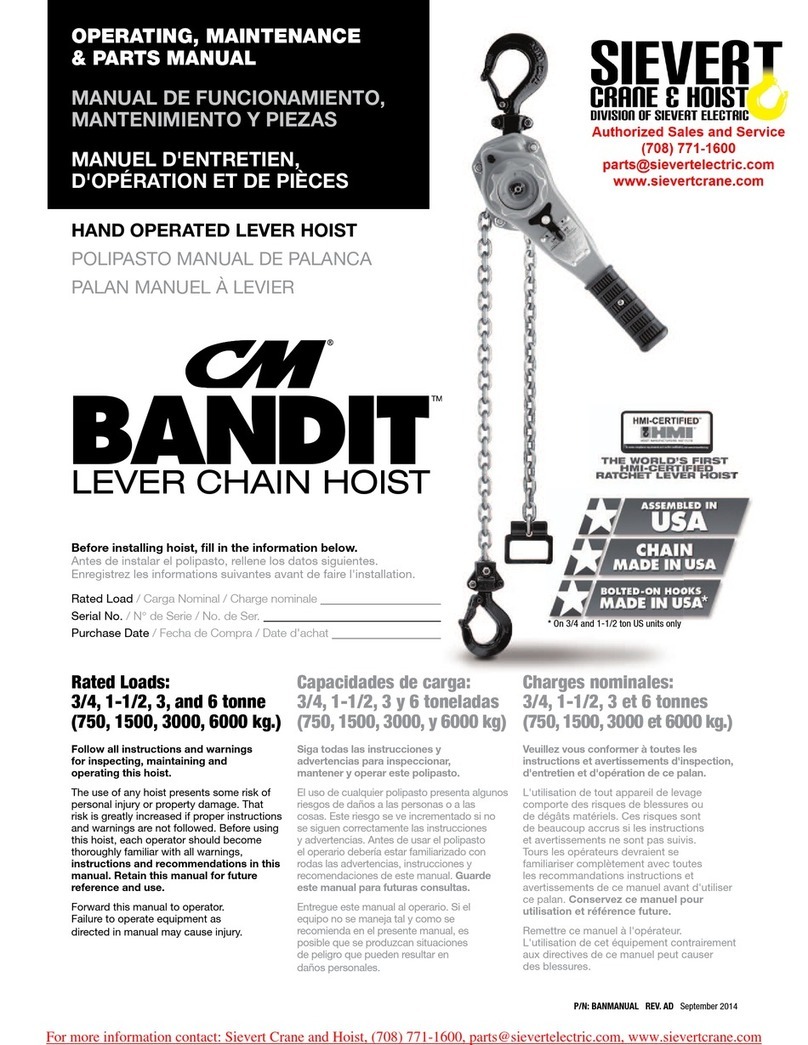
- 1 -
1. Introduction
Checklist for the product and accessories
Please check the following before use.
(1)Whether or not the product arrived as ordered. Please check the tag
on the product. At that time, please take note of the product number
(MFG. No), which will be useful for later inquiries.
(2)Whether or not the body is deformed or damaged due to accidents
during transportation.
(3)Whether the accessories are present. (Please use the checklist)
1-1. Confirmation of the product and accessories
WARNING
•This instruction manual describes items specific to the L-type Electric chain hoist.
•Regarding the safety precautions on using the Electric chain hoist, and when doing the
mounting, installation, maintenance and inspection, in addition to this instruction manual,
please ensure to read the separate volume "Hitachi Electric chain hoist Owner's Manual and
observe all the cautionary notes.
Accessories list
Service Manual (this manual) 1
Owner's Manual 1
Chain gauge 1
1-2. About the contents of the instruction manual
The contents of this instruction manual are subject to change without notification and without any legal
responsibility on our part.
1-3. About guarantee
•
Within the warranty period (within one year after delivery), provided the equipment is used in accordance with
the cautionary notes given in the instruction manuals, on body labels etc., and provided the cause of the fault
or breakage lies in our design, manufacturing or materials etc., we will repair it free of charge.
•
Even within the warranty period, repair charges may apply for the following situations:
1.The fault is caused by the failure to adhere to the usage method and cautionary notes stated in the
instruction manual of this product
(1)When used at a duty factor or start frequency above the set usage limit
(2)When used with a load exceeding the rating
(3)When the product or accessories had been remodeled
(4)When used in severe environments exceeding the product specifications
2.When used by someone without the required education or qualification prescribed by laws or regulations
3.When used without the routine checks or periodic inspections stipulated by laws and regulations
4. Fault or damage caused by fire, earthquake, lightning strike or other natural disasters
5.When used without exchanging the consumable parts such as the brake, electromagnetic contactor etc.
6. A fault of this product caused by another equipment used in combination with this product
•
Since we do not guarantee for secondary damages such as lost production due to the failure of this product,
when such situation is anticipated, please prepare an auxiliary machine in advance or consult our sales
office.

